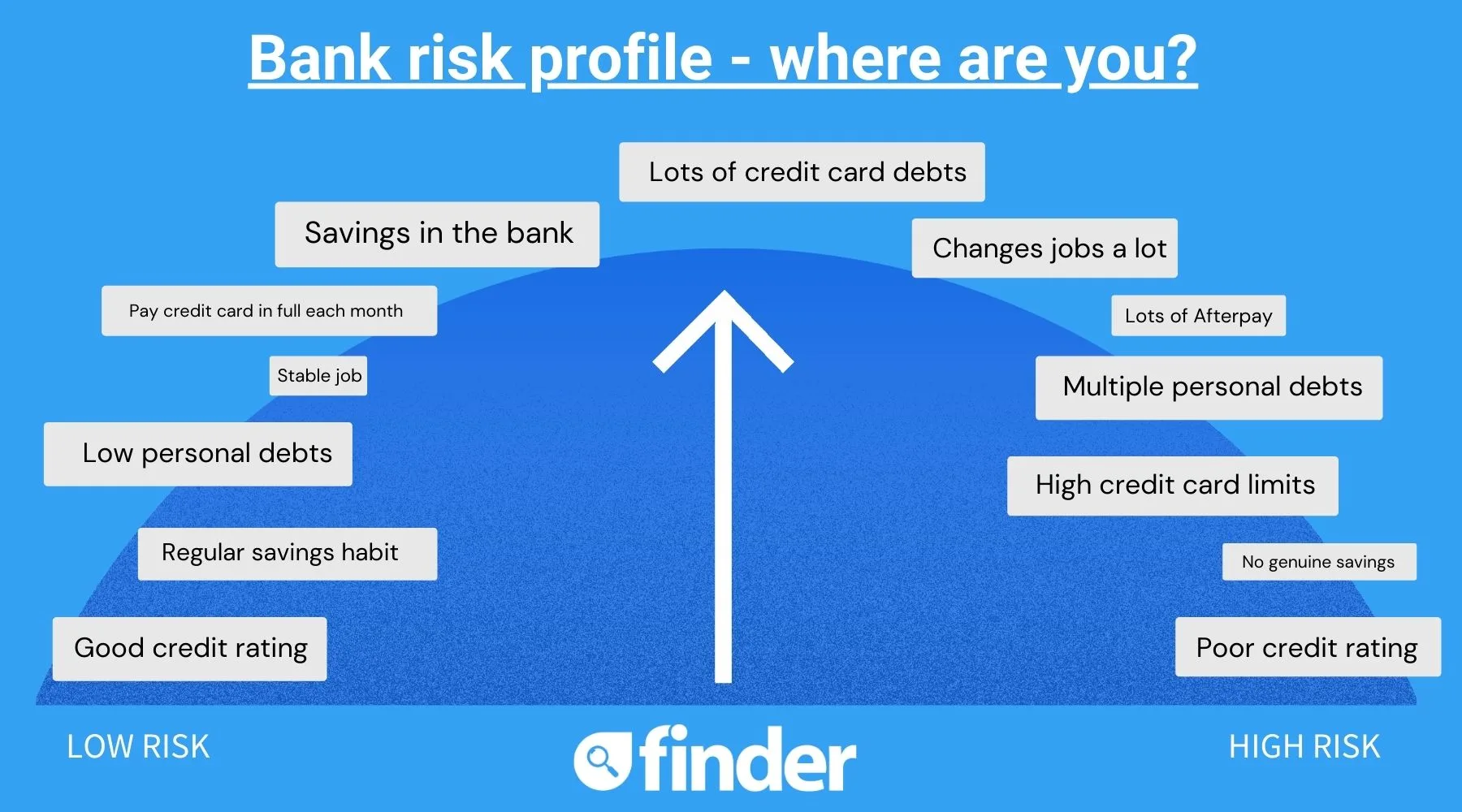When you apply for a new job, you always try to put your best foot forward on your resume, right? You highlight your strengths, emphasise all your experience and do your best to convince your would-be new employer that you're the best person for the job.
When you apply for a home loan, it's a really similar experience. With your application, you're aiming to show the bank all of your best features and all the ways you've been responsible with money in the past.
This is all in an effort to convince a lender that you'll be responsible with their money (i.e. a chunky home loan worth hundreds of thousands of dollars) in the future.
So how do you put together a killer home loan application that has the greatest chance of impressing your future lender? Follow these steps to get home loan ready in no time.
Understand what the banks are looking for
Here's what the banks want to know: If we lend you this money, are you actually going to repay it?
That's what it all boils down to.
To work this out, they want to understand your whole situation, so they can assess what kind of a risk you pose.
Have you got a strong track record of making personal loan and car loan payments on time? Do you pay off the minimum due on your credit card each month (or even better, the full balance)? Or are your credit card statements littered with hefty interest charges and late payment fees?
What about your shopping habits? Do you indulge in Afterpay to fund your shopping habits, or do you have a history of saving up for the things you really want?
![]()
Consider your current shopping, spending and money management habits. Where do you think you would fall on a "risk rating" if a bank were to assess you today?
The below infographics gives you an idea of where you'd stand right now, based on your current money habits:

Where do you think you land on this scale?
If you're starting to feel a little bit nervous about your money habits and you're worried about where you might land on the banks' risk scale – and you're not sure about your chances of getting loan approval as a result – don't despair. There's a lot you can do to get back in the driver's seat, and it starts with setting some really good money habits.
Re-set your money habits
Now, if you're reading along and thinking, "This is fine. I'm super responsible with money, I stash savings away every month and I don't even own a credit card", then you're on the right track.
(That said, you might still find some golden nuggets of wisdom to move the needle forward on your property ownership journey, so keep reading!)
And for everyone else, here's the good news: Lenders generally only want to see the last 6 months of your bank statements. So if you don't tick all these boxes just yet, it means you have 6 months to get your finances in order, so to speak.
The things that matter include:
- A clean credit rating
- Responsible money habits
- Stable income
- A healthy deposit
![]()
6-month plan to get your finances in shape
Your job | Why? | The plan | Timeframe? |
|---|---|---|---|
Check your credit score | Your credit score gives you an indication of how likely you are to access credit. The higher the score, the more likely it is you will be approved for credit. Check your credit score for free. | This one's easy peasy. You can check your credit rating online for free. If you find any blemishes, red marks or issues, you can take steps to improve your credit rating. | Right now. Download the Finder app for free and get find out your credit rating in minutes. |
Consolidate and/or pay off credit card debts | The bank considers every dollar of credit limit you have as being a current debt. A limit of $10,000 is viewed by the lender as a DEBT of $10,000. Lower your limits ASAP and you'll boost your borrowing power in one swift step. | Reduce the limit of your credit cards immediately. Every single pay period, as you make a payment, reduce your limits even further. Consider consolidating multiple debts onto one 0% interest card. | Over the next 6 months (or longer). |
Consolidate and/or pay off personal loans | As above, the banks don't like debts, especially unsecured personal debts. Every dollar of debt reduces your borrowing power too. | If you only have one debt, it might be worthwhile sticking to the minimum repayments while you work to pay off your credit card debt. But if you have multiple debts to wrangle, consider consolidating them all into one monthly repayment. | Over the next 6 months (or longer). This won't make or break your loan application, but the sooner you can pay this debt off, the better (and the greater your borrowing power will be). |
Cancel any Afterpay accounts | If you're using Afterpay regularly to spread the cost of items out over a few weeks, this can a red flag for banks. It signals that you don't have the discipline to save for the things you want. | Remove the temptation to spend on things you can't afford, by cancelling your accounts. Pay off any remaining Afterpay plans you have going and then nix your account entirely. | If you have no current Afterpay debts, cancel your account now. Otherwise, check your payment instalments for your final payment date. Make a note in your calendar to cancel your account the next day. |
If you work on all of the above steps over a period of 6 months (or maybe a little longer, depending on our situation), you can get what banks call 'home loan ready'. This means your finances are organised, you have a manageable level of personal debts, and you've reached a point where banks and lenders feel confident giving you that all-important home loan approval.
To sum up:
This module is all about getting your financial house in order, so you can give yourself the best possible chance of being approved for a home loan.
The plan we've outlined above runs for 6 months, but depending on your situation, you may need to go through the process for a little longer to whip everything into shape.
It can feel like a hard slog at times, but keep your eye on the prize. These are tangible steps you can take, to help close the gap between where you are now and where you want to be.
And for each task you knock off the list, you step closer towards making your homeownership goals a reality.
With your financial house in order, your next step will be applying for a home loan. In next week's module, we'll walk you through the steps involved in finding the best home loan for you.
Ask a question
More guides on Finder
-
Calculate the income needed to buy a home in any suburb in Australia
Work out how much you need to earn to buy a house in any Australian suburb.
-
How much does it cost to build a house?
How to accurately estimate the cost of building your own house.
-
Why are fixed rates sometimes lower than variable rates?
When fixed rates fall below variable rates, it could portend ominous economic outcomes. We explain how it all works.
-
Home Loans For Discharged Bankrupts
Discharged bankrupts start off their financial state fresh, but some may still find it difficult to get a mortgage. Discharged bankrupts may still get a home loan, but with stricter conditions and higher loan rates.
-
No doc home loans
No doc home loans are rare in Australia, but not impossible to find. Here's how to get a loan without providing evidence of income.
-
Single Income Home Loan
Find out how you can afford a property on a single income and learn how to compare different loans to get the best deal.
-
Bridging Loans
If you haven't sold your house yet, but want to buy your next one before the sale is completed a bridging loan may be able to help. Read on to discover how bridging finance can help.
-
Basic Variable Rate Home Loan
Compare variable home loan rates (big 4 and smaller lenders) so you can get a home loan with a cheap interest rate and no expensive features you won't use.
-
Low deposit home loans
You may be able to get a low deposit home loan with just a 5% cash deposit. Here are the lenders who are more likely to lend you a 95% loan.
-
Bad credit home loans
Find out whether you can get a home loan application approved by a lender if you have bad credit.
